Anti-Magnetic Mastery: How Modern Watchmaking Defies Magnetism with Precision And Innovation
Discover what anti-magnetism in watches means, how it protects your timepiece’s movement, and explore five of the best anti-magnetic watches that showcase cutting-edge materials, precision engineering, and the future of horology
You may not see it, but it is everywhere. From your smartphone to your handbag clasp, invisible magnetic forces lurk in plain sight — quietly plotting against the accuracy of your beloved mechanical watch. One close encounter and suddenly your chronometer is running faster than your morning espresso shot. Magnetism, once the nemesis of scientists in steel laboratories, has now become the everyday villain of modern wrists.
In response, watchmakers have declared war — not with brute force, but with quiet ingenuity. The result? Anti-magnetic timepieces that not only laugh in the face of electromagnetic fields but do so with impeccable style and scientific flair.
Understanding Anti-Magnetism
Anti-magnetism refers to a watch’s ability to resist the adverse effects of magnetic fields on its movement. The concept took shape in the early 20th century when manufacturers began using soft iron inner cases to shield movements from magnetism. Today, however, technological innovation has pushed this idea much further.
Modern watchmakers rely on non-ferrous materials — such as silicon, titanium, Glucydur, and Nivachron — to construct vital components like balance springs and escapements. These materials do not react to magnetic fields, ensuring the watch maintains accuracy even when exposed to forces that would once have rendered it useless.
ISO Standard 764 specifies that a timepiece must resist magnetic fields of up to 4,800 A/m to qualify as anti-magnetic. However, leading luxury watchmakers have gone far beyond this baseline, developing watches that withstand magnetic forces up to 15,000 gauss or more — an achievement that would have been unthinkable a few decades ago.
The Role of Anti-Magnetism in Movement Performance
A watch’s movement is its heart, and magnetism is its silent adversary. When magnetic fields interfere with the balance spring, the oscillation rate changes, distorting timekeeping accuracy. Anti-magnetic innovation ensures that even under intense exposure, the mechanical rhythm remains true.
Omega, for instance, transformed the industry with its Master Chronometer certification, tested by METAS to ensure resistance up to 15,000 gauss — a benchmark that redefined the standard for everyday durability. Likewise, Rolex’s engineers have continued to refine the Milgauss with cutting-edge alloys and Faraday cages, ensuring unwavering precision in laboratories, hospitals, and even high-voltage environments.
Omega Seamaster Aqua Terra >15,000 Gauss
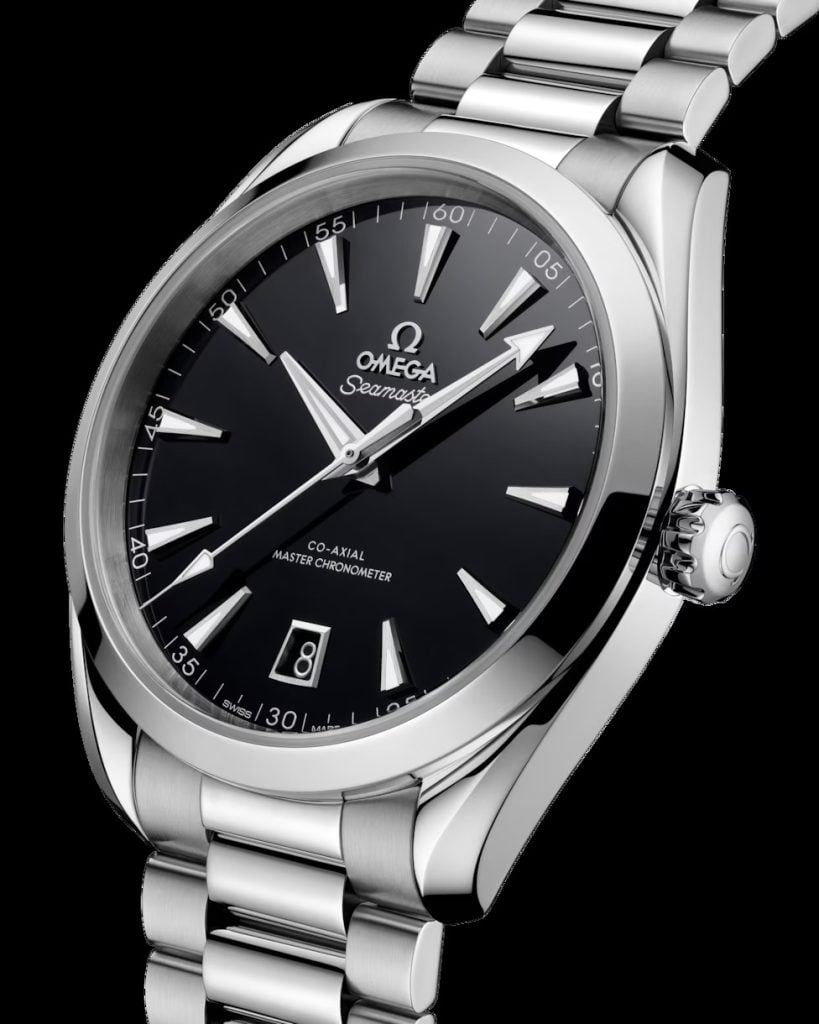
The Seamaster Aqua Terra is a superb tribute to OMEGA’s rich maritime heritage. This 41 mm model has a symmetrical stainless-steel case with a screw-in caseback featuring a wave-edged design. Inside this timepiece are the revolutionary components that guarantee the highest standards of performance. From the Co-Axial escapement for long-lasting precision, to the silicon balance spring for superior anti-magnetism, OMEGA has conquered every challenge that matters.
Rolex Milgauss
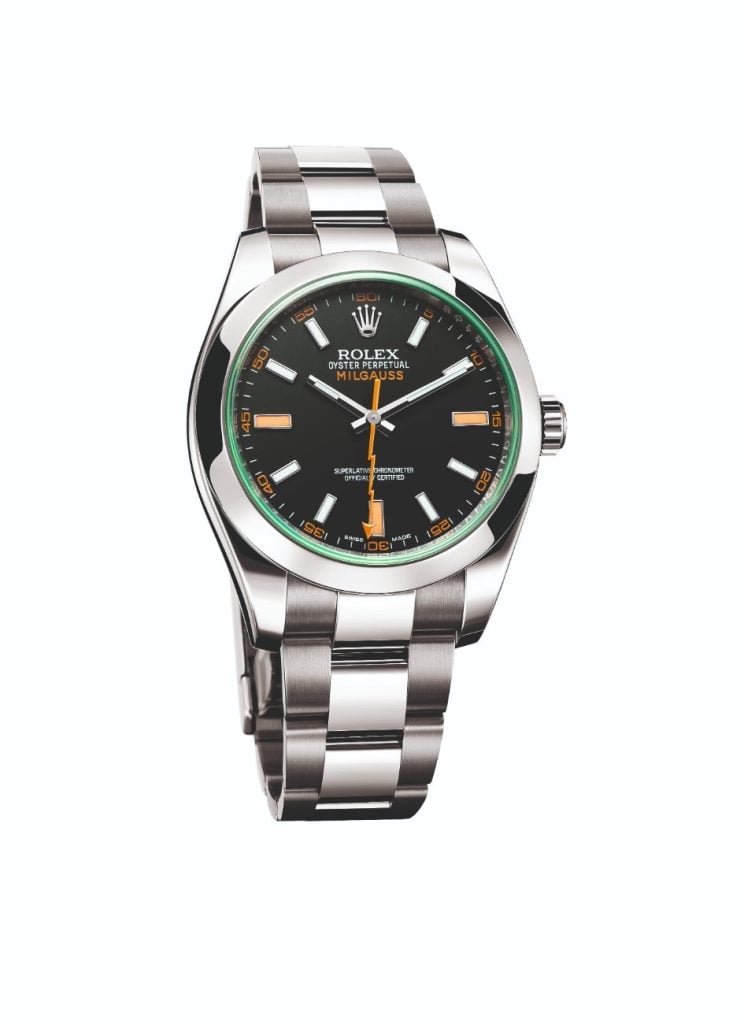
A legend born in the 1950s for scientists working near magnetic equipment, the Rolex Milgauss is named after its resistance to 1,000 gauss. Inside its Oyster case lies a magnetic shield that protects the movement, while its distinctive lightning bolt seconds hand adds a touch of irreverent character. Though subtle in design evolution, the Milgauss remains one of Rolex’s most technically resilient models.
IWC Schaffhausen Pilot’s Watch Automatic 41 Top Gun Mojave Desert
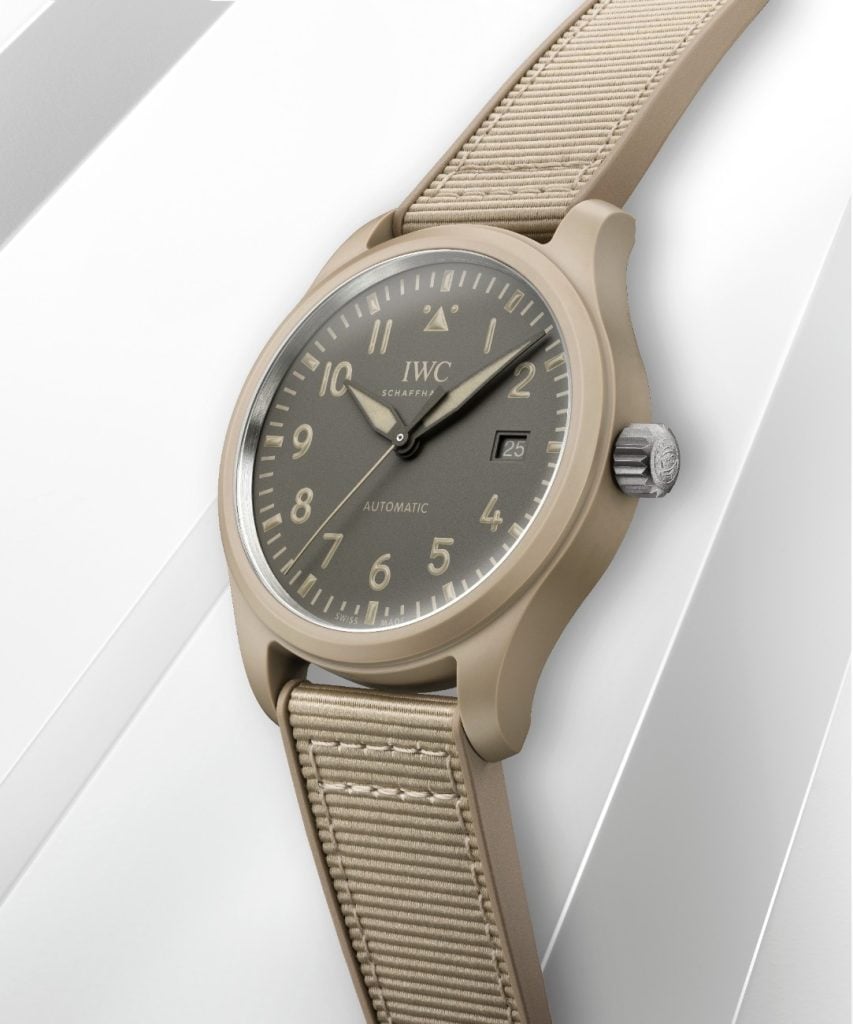
This is a stealthy fusion of military precision and desert-hued elegance. Inspired by the arid landscapes surrounding the U.S. Navy’s TOPGUN flight school, it features a sand-coloured ceramic case that’s both striking and virtually scratch-proof. Beneath its rugged exterior lies the IWC-manufactured 32110 calibre — a robust automatic movement encased within a soft-iron inner shell to guard against magnetic interference. The result is a watch built for the extremes, capable of withstanding high g-forces, cockpit vibrations, and everyday magnetic fields with the same effortless composure.
Blancpain Fifty Fathoms 70th Anniversary Act 3
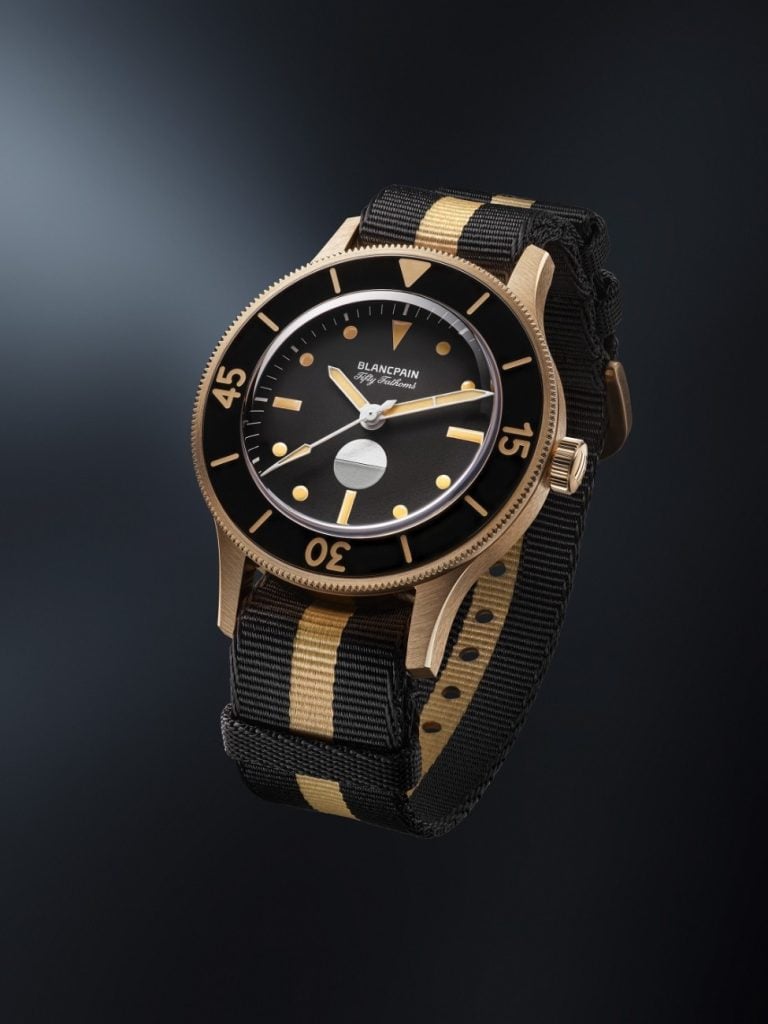
Inspired by its non-magnetic US Navy counterpart, this model features a matte black dial with vintage Super-LumiNova® and a moisture indicator at 6 o’clock. The eight dots, one triangular, and three bar-shaped hour markers, as well as the arrow-shaped hour and minute hands with a central second hand, are similarly gold-colored. The watch is powered by the self-winding Calibre 1154.P2 movement, which is placed in a 9 carat bronze-gold casing. The timepiece’s dual barrels provide a considerable 100-hour power reserve, while a silicon balance spring maintains the movement’s resistance to magnetism. Blancpain is introducing a 1000-gauss version of its movement for the first time, thanks to the employment of bronze-gold escapement combined with special alloys.
Panerai Luminor Submersible 1950 Amagnetic
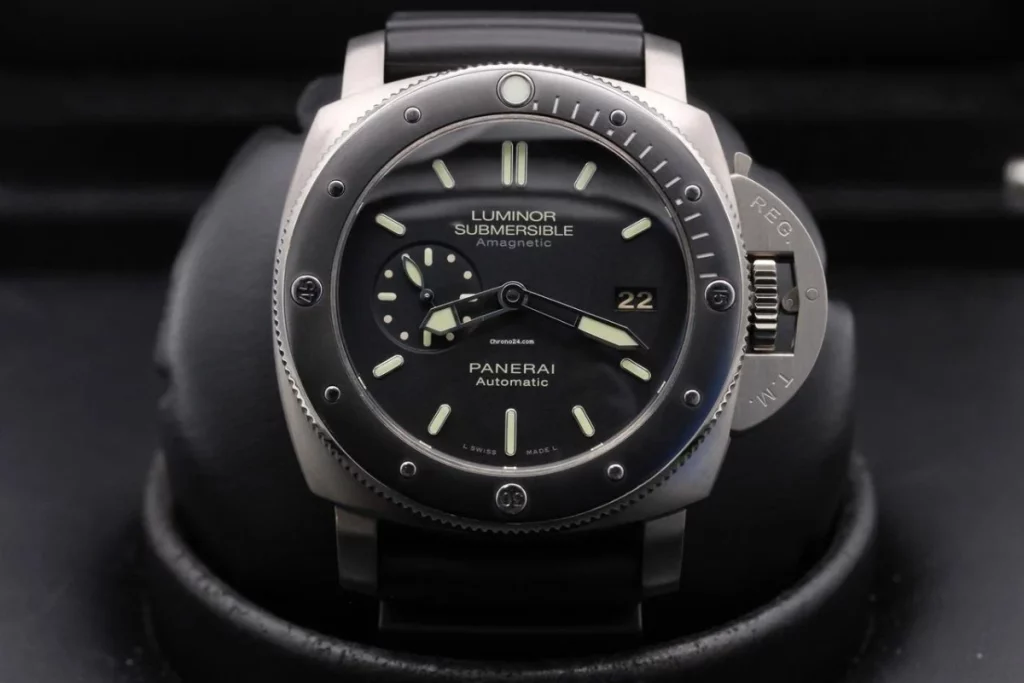
Panerai’s Italian naval heritage meets modern innovation in this highly magnetic-resistant timepiece. The soft iron inner case creates a formidable shield around the movement, offering protection up to 40,000 A/m. It is a diver’s dream that performs as brilliantly underwater as it does in an electromagnetically charged cityscape.
The Future of Magnetic Resistance
As everyday life becomes increasingly saturated with magnetic sources — from electric vehicles to wireless charging — anti-magnetism is no longer a luxury feature but a necessity for mechanical longevity. Watchmakers are now integrating magnetism-resistant materials across their entire collections, ensuring every tick remains as precise as it was on day one.
Anti-magnetism is more than a technical achievement — it is a promise of resilience, accuracy, and timeless engineering. In a world dominated by invisible forces, these watches stand as enduring symbols of mastery over the unseen.